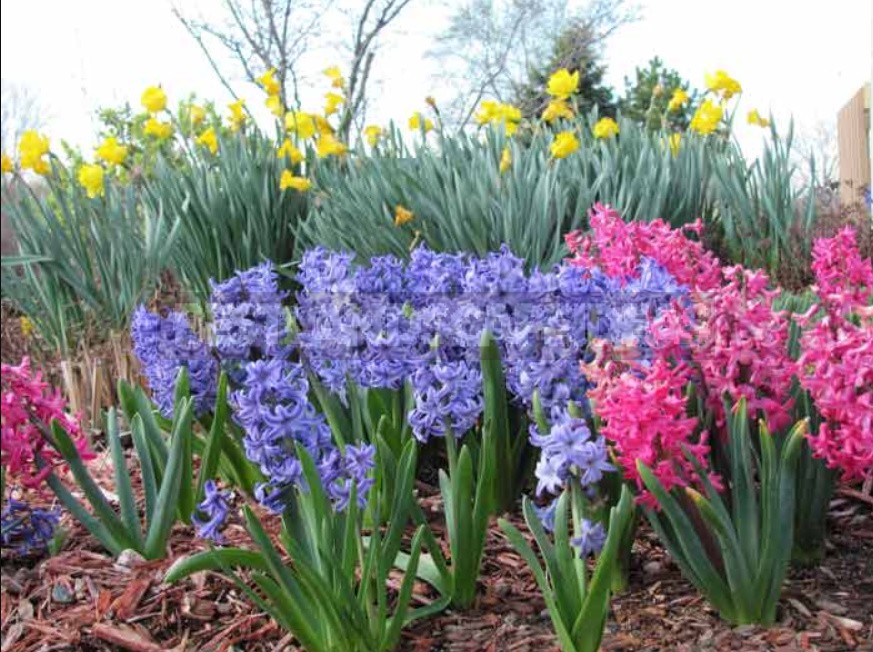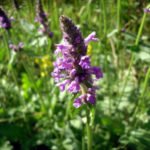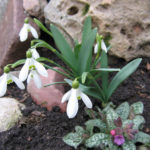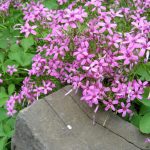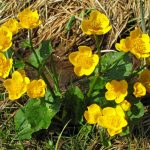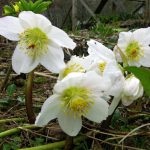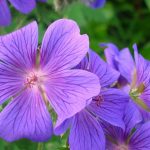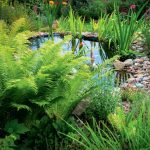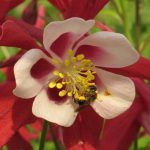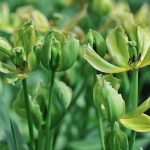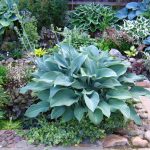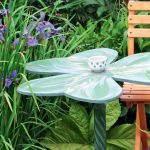In the flower garden, tulips, daffodils and hyacinths, in addition to the traditional partners who bloom with them, have reliable friends. These are perennials with lush or wide foliage. In the middle of spring, it will become a backdrop to the bright flowering of bulbous, and from the beginning of summer will hide their withering, obscuring the drying plants.
1. Astilbe
Astilbe is a loyal friend of daffodils and tulips that don’t need to be dug up. A carpet of its openwork leaves will cover the fading bulbs.
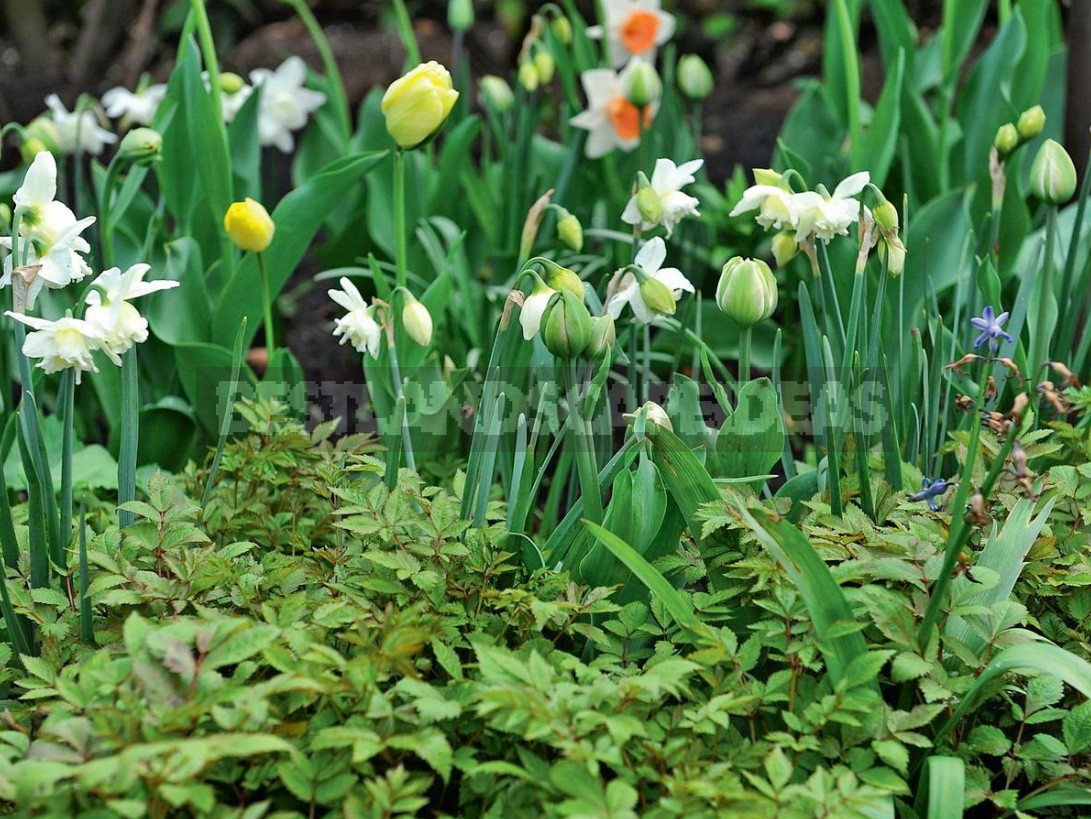
2. Brunnera macrophylla
Brunnera macrophylla blooms along with early tulips, and the peak of flowering occurs in the middle of the Tulip season. Delicate, resembling Myosotis, blue small flowers are collected in loose inflorescences over dense green rounded leaves. In the flower garden, you can play on the contrast of yellow tulips and daffodils and blue Brunnera flowers. Or choose bulbous with white flowers to match the silvery leaves of the variety ‘Jack Frost’ or white-peaked varieties ‘Variegata’. Brunnera ‘Betty Bowring’ with white flowers will fit into a composition with bulbous flowers of any color.
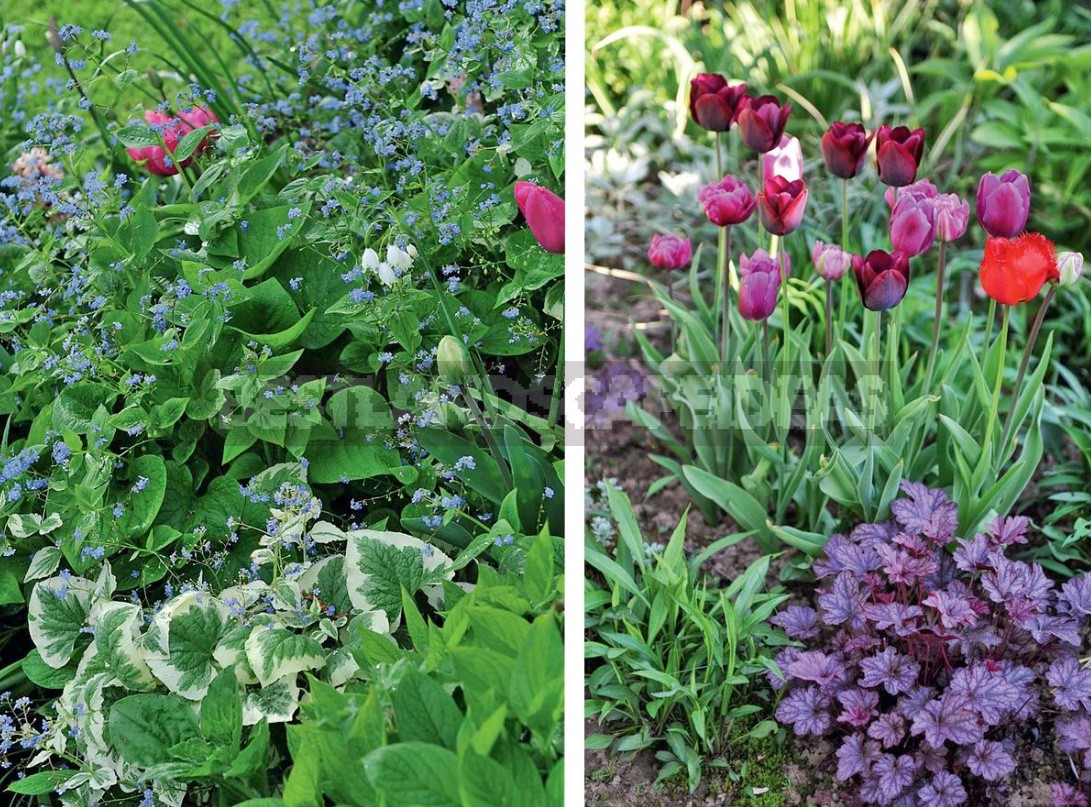
3. Heuchera
Bulbous look beautiful with any Heuchera, especially if you choose the color of the leaves and flowers tone to tone. Attention: varieties and hybrids of Heuchera villosa, which form the largest bushes, will hide the fading tulips and daffodils more reliably than others.
4. Dicentra
A pink and purple palette fills the flower beds when the triumph tulips bloom, followed by later classes of tulips. Perennials with pink flowers are their natural partners. First among them is Dicentra, whose “broken hearts” are collected on gracefully leaning flower stalks over openwork, like a fern, foliage.
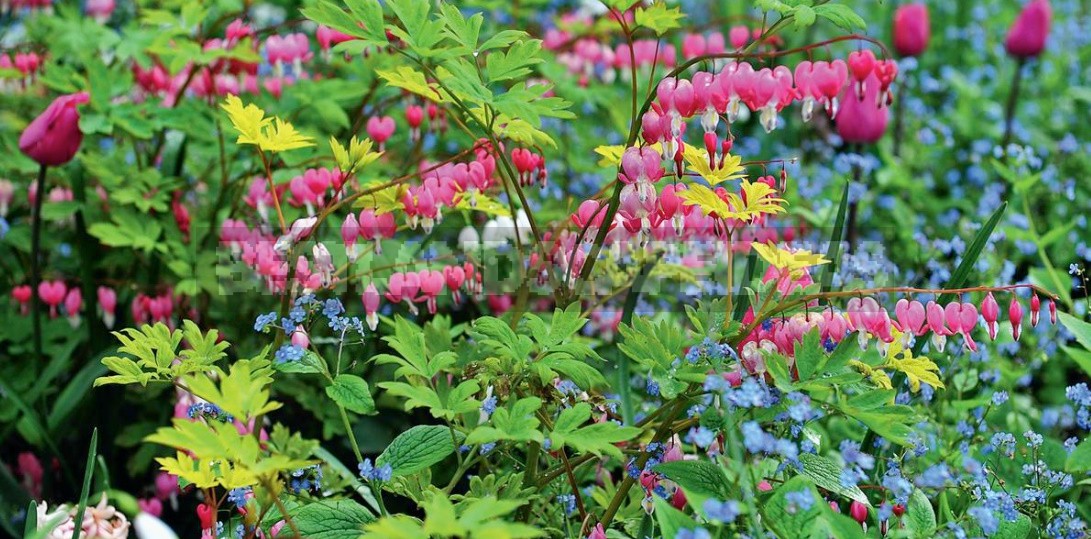
Keep in mind: Lamprocapnos spectabilis is not the best partner for tulips. Unlike sun-loving and drought-resistant bulbous, it needs a moist rich soil and light shade. But if you want to annually admire such a wonderful study in pink tones — you can compromise the principles and periodically replace the falling plants.
5. Geranium
Due to the neat shape of the bushes and beautiful foliage, many Geranium are decorative from the moment of foliage dissolution until the fall. During the flowering of bulbous plants, these plants act as a green background, and then take on the role of the first violin. Especially worth noting is the hybrid ‘ Rosanne‘, whose long shoots will cover 1 m² of flower beds. And this Geranium will bloom until the autumn frosts.

6. Sanguisorba
In spring, the “fountains” of sanguisorba foliage are beautiful in themselves. They quickly gain volume and cover the fading bulbs. And in summer and autumn, its soaring inflorescences give the flower garden airiness.
7. Hosta
Tightly twisted Hosta leaves, just emerged from the ground, perfectly match the blooming tulips. By the time the petals fall, the unfolded hosts are already coming to the fore.

8. Crambe cordifolia
Next to the heart-shaped Crambe it is better to plant early blooming varieties of bulbous. The fact is that the huge, burdock-like leaves of Crambe cordifolia grow quite early, and can cover the late tulips in bloom, so it is better not to risk it. Keep in mind that the plant has one drawback — its foliage is very popular with snails, slugs and caterpillars.
9. Euphorbia
Euphorbia stretch to a height of 50 cm and decorate spring flower beds with their Chartreuse-yellow inflorescences. Very similar to them and Bush Euphorbia palustris, but it is higher and looser. All of them are perfectly combined with white and yellow bulbs. And Euphorbia griffithii ‘Dixter’ with the brightest orange-red inflorescences will be a good companion for tulips of ” hot ” colors.

10. Sedum
Against the background of bluish rosettes of high varieties of Sedum, tulips of both “hot” and “cold” colors look good. And after flowering bulbous to the fore come regrowing shoots of Sedum.
11. Daylily
Daylily can be attributed to perennials that are decorative and out of bloom. In spring, the fountains of its narrow belt-shaped light green leaves will be a spectacular addition to the flowering bulbs, and in summer they will occupy their territory.
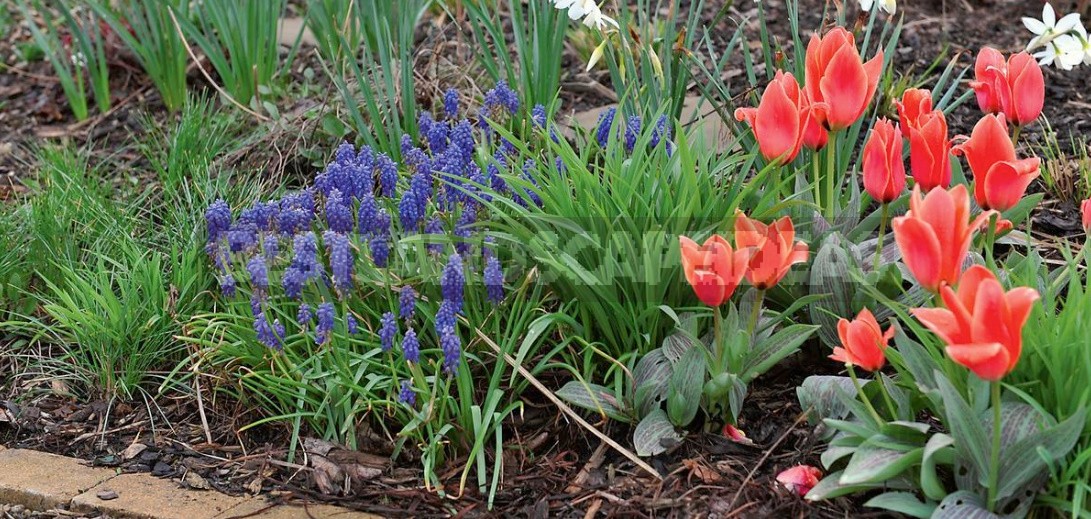
12. Helleborus
It is impossible to imagine spring without Helleborus, as well as without tulips and daffodils. Together they give a synergistic effect in the flower garden.
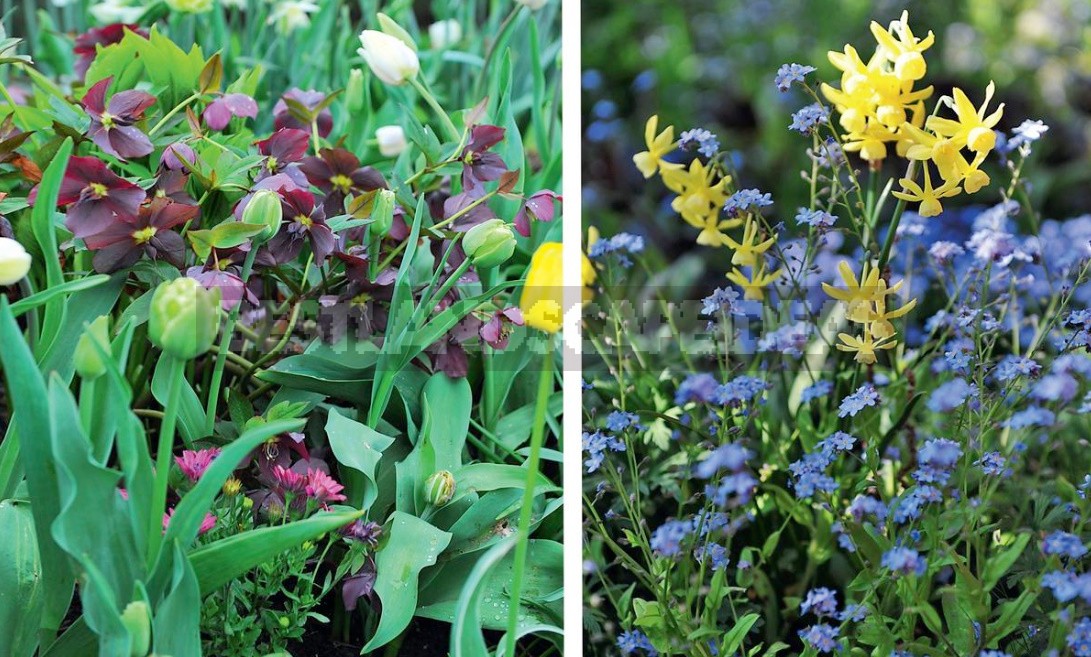
You can choose spectacular hybrids of Helleborus that bloom much earlier than the very first tulips, while their flowers will remain decorative even after the flowering of bulbous ones.
13. Myosotis
Myosotis is probably the most popular biennial. The foam of small blue, pink or white flowers creates a perfect background for bulbous any shades. You only need to consider one point: once you plant Myosotis, you are unlikely to get rid of it — the plant is heavily sown. The ideal option is to sow the seeds in the school in early summer, and in the fall, transplant the seedlings to the flower garden, where they will bloom next spring. If you do not want abundant self-seeding, then in early June, the flowering plants need to be carefully removed from the flower garden.
14. Paeonia
The adult Paeonia Bush occupies a cubic meter of space in the flower garden. But this is in the summer, and in the spring, when its bright young shoots just peeked out of the ground, they are most bulbous around them. And the place will not be lost in vain, and at the beginning of the season, the flower garden will look more spectacular.
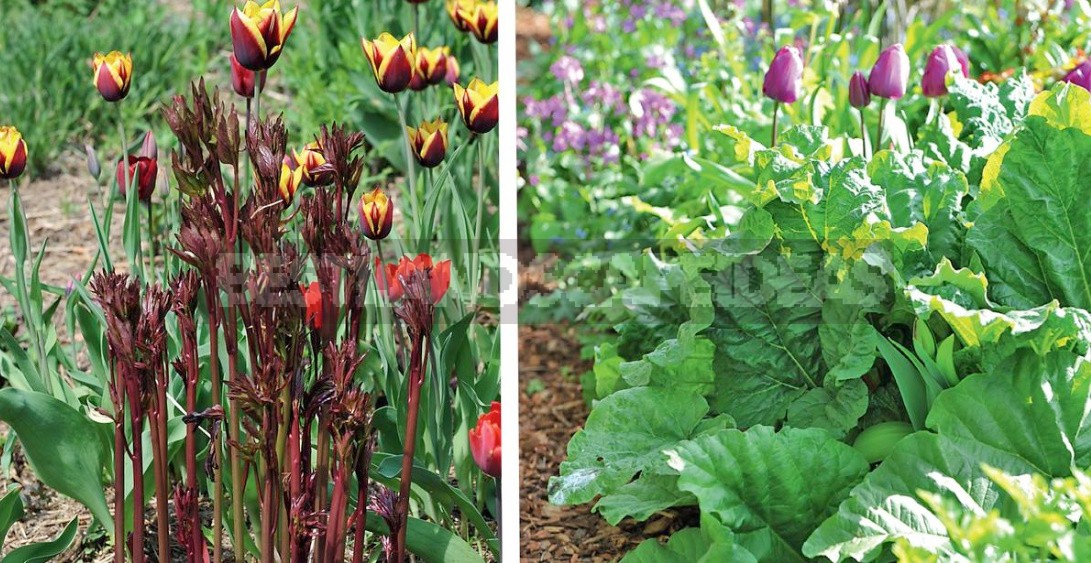
15. Rheum
“Architectural” Rheum as the foliage grows will cover one and a half square meters with fading bulbs. Tip: do not plant tulips and daffodils too close to the Rheum, otherwise it will cover them even during flowering.
And rhubarb is a great plant for shady places and compote.
16. Hesperis matronalis
The flowering of Hesperis matronalis will support Darwin hybrids and late-flowering classes of tulips. Clouds of its inflorescences can be purple, purple or white, and the pleasant aroma that they emit is especially strong in the evening and at night. That’s why they called her the night violet.
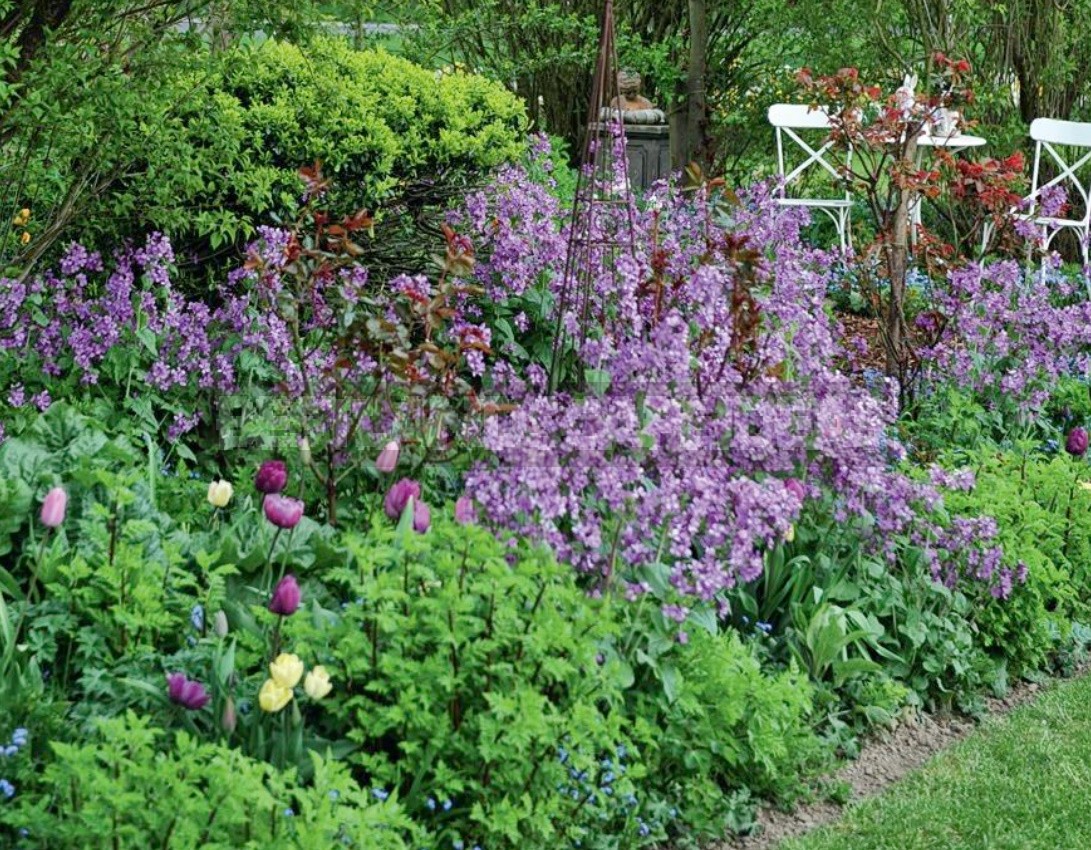
In fact, it is a short-lived perennial plant, but it blooms best in the first year, so it is grown as a biennial. Hesperis matronalis is plentifully sown and, like the forget-me-not, once it appears in the garden, it is unlikely to ever leave it.
